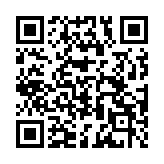ElectronicBanker pilot implementation guide for regional banks
New platforms rarely fail because of code; they fail because stakeholders cannot agree on objectives, timelines, or success metrics. ElectronicBanker pilots succeed when banks treat them like surgical projects with explicit goals. The following guide outlines how regional banks can go from kickoff to live telemetry in about four weeks without overwhelming teams, making the pilot a proving ground for the digital banking platform RFP template and every “how to choose a digital banking platform” consideration.
Week 0: Frame the mission
Before kickoff, align the sponsor, treasury, risk, and technology leads on the problem to solve. Typical missions include “consolidate liquidity telemetry,” “monitor sponsor bank programs,” or “replace spreadsheet-driven ALCO packs.” Document the mission, desired outcomes, hard constraints, and executive sponsor. Capture the baseline pain points so everyone remembers what success must beat. ElectronicBanker teams also define what success looks like, such as reducing manual reporting hours by 50 percent or cutting incident response time in half, then translate those goals into the rubric used for how to choose a digital banking platform.
Week 1: Inventory systems and data
Launch workshops with treasury ops, payments, and compliance to catalogue data sources. List core systems, payment processors, data warehouses, and manual workflows. Identify owners, access methods, and data quality issues. ElectronicBanker engineers then prioritize two or three high-value feeds for the pilot—usually liquidity positions, payment events, and compliance alerts. Capture sample payloads and security requirements so connectors can be configured quickly.
Week 2: Configure connectors and models
With the priority feeds defined, ElectronicBanker provisions secure connectors and sets up deterministic IDs, normalization rules, and enrichment logic. Bank engineers review the mappings to ensure they align with policy. In parallel, operations leaders map the dashboards, alerts, and workflows they expect from the pilot. Keeping scope tight allows the team to test within days rather than months.
Week 3: Stand up workflows and access
Once data flows, configure the workflows that make the pilot useful. Create alert tiers, approval queues, and reporting templates aligned to the original mission. ElectronicBanker grants role-based access to treasury, risk, compliance, and product stakeholders. The team runs live walk-throughs showing how data, alerts, and approvals flow through the platform. Capture feedback immediately and adjust dashboards or copy before stakeholders cement first impressions.
Week 4: Validate, measure, and brief leaders
Use the final week to validate data accuracy against existing reports. Run side-by-side comparisons for multiple days and log discrepancies. ElectronicBanker provides validation dashboards that highlight mismatched balances or missing events so engineers can remediate quickly. Once accuracy clears the agreed threshold, assemble a leadership readout summarizing the mission, improvements observed, and next steps for scaling beyond the pilot footprint—deliverables that drop straight into the digital banking platform RFP template.
Staff the pilot deliberately
Pilots fail when they rely on borrowed time from people already overloaded. Assign a dedicated pilot lead, an operations owner, and a technical integrator. Backfill their day jobs if necessary. ElectronicBanker recommends a daily stand-up with this trio plus a weekly steering sync with the sponsor so blockers do not linger. Keeping the core team small yet empowered maintains velocity.
Communicate with regulators and auditors early
Supervisors appreciate transparency. Brief relationship managers at the Federal Reserve or OCC on the pilot’s scope, especially if it touches liquidity, compliance, or customer communications. Share the mission, controls in place, and validation approach. ElectronicBanker often joins these briefings to walk through security, data residency, and audit logging. Early communication prevents misunderstandings when examiners see new telemetry in their next visit.
Sustain momentum post-pilot
Pilots should end with a roadmap, not a handoff to nobody. Define the backlog of additional feeds, workflows, and teams that will onboard next. Assign named owners, budgets, and timelines. ElectronicBanker embeds customer success leads who continue biweekly check-ins until the platform becomes part of business-as-usual operations.
Measure pilot outcomes relentlessly
Document the metrics that prove success: manual hours saved, incidents caught, time to insight, or audit requests accelerated. Capture these numbers before and after the pilot to show deltas. ElectronicBanker dashboards make this easy by logging every alert acknowledged, workflow completed, and report generated. Presenting hard metrics keeps executive support alive and arms compliance with evidence if regulators ask what value the pilot delivered.
Common pitfalls to avoid
- Launching without a named sponsor empowered to clear blockers.
- Treating the pilot as a generic “sandbox” rather than focusing on one mission.
- Ignoring compliance and security until the final week.
- Allowing scope creep that delays validation.
- Skipping enablement for the analysts who will live in the product daily.
Pilots are the bank’s chance to prove that modernization delivers measurable outcomes. By running a tight playbook, ElectronicBanker customers show results in weeks, win support for broader rollout, reassure regulators, and signal discipline to partners watching from the sidelines.
By VEGAS Locals
Things to do in Vegas
Find the best spots in Vegas with Vegas.xyz


